Another day in 2020, another day being stuck at home. COVID-19 has certainly derailed and changed our way of life. Not only has this pandemic forced the closure of schools and businesses around the world, but world leaders have also shut their borders in an effort to contain the spread. Social events are cancelled and medical personnel around the globe are scrambling to cope with an ever increasing number of patients.
It’s fair to say that this is an unprecedented era for most of us. However, COVID-19 isn’t the only pandemic that the human race has endured throughout its long period of existence. In fact, COVID-19 even pales in comparison to some of the diseases that have ravaged Earth in the past! Here are eight of the deadliest pandemics in history and how we survived them all.
1. The Third Cholera Pandemic (1852 – 1860)
What is it?

Image credit: Oxfam East Africa
Cholera is an extremely infectious disease that causes symptoms such as bouts of severe diarrhea, vomiting, and dehydration. If left untreated, it can even lead to death. Throughout history, there have been as many as seven mass outbreaks of the disease. However, the third cholera pandemic is arguably the deadliest and also the most significant. It began in India and later spread to other parts of Asia, Europe, North America, and Africa.
Fatalities from the illness continued to skyrocket across the world as medical professionals struggled to figure out the cause of the outbreak. In Great Britain alone, more than 20,000 people died between 1853 – 1854.
How we survived

The turning point came in 1834 when a British doctor named John Snow (not related to the White Wolf) discovered that bacteria in contaminated water was the main source of infection. He noted that a particular neighbourhood in London recorded a high number of cases and convinced officials to replace the pump handle. After that, cases started to decline abruptly.
Armed with that knowledge, people around the world started to filter and boil their water more cautiously. With the main source of infection cut off, cases began to drastically decline and eventually, the pandemic ended. Sadly, clean water is still scarce in certain parts of the world. Therefore, cholera outbreaks still occasionally happen in poorer countries. However, the good news is we now have vaccines and effective treatment options to help those afflicted with the virus!
2. The Asian Flu Pandemic (1956 – 1958)
What is it?

The Asian Flu Pandemic was an outbreak of the Influenza A virus. It began in China around 1956 and spread across the world in early 1957. Even though experts consider it the least deadly flu pandemic of the 20th century, it still led to between one and three million deaths around the world.
There are still debates over the exact cause of the outbreak today. However, a popular theory is that the virus came as a result of mutated viral strains in wild ducks which binded to human strains of the flu virus, and led to the new outbreak. Most individuals affected by the virus often displayed only minor flu-like symptoms such as a mild fever and cough. However, in patients where the virus progressed, it led to life-threatening complications such as pneumonia (lung infection).
How we survived
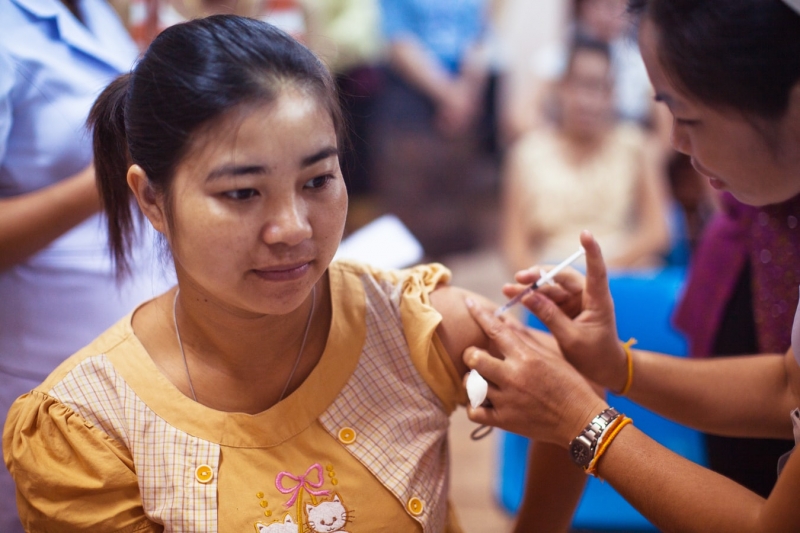
Thankfully, less than a year since the outbreak began, a vaccine was discovered in 1957 and made widely available soon after. The rapid development of the vaccine, in addition to available antibiotics to limit the damage of secondary infections, helped quickly curb the spread and lower the mortality rate. By 1958, the WHO declared that the pandemic was over.
Also read: COVID-19 Quarantine Tips: What To Do if You Get Stuck in Another Destination
3. Cocoliztli Epidemic (1545 – 1548)
What is it?
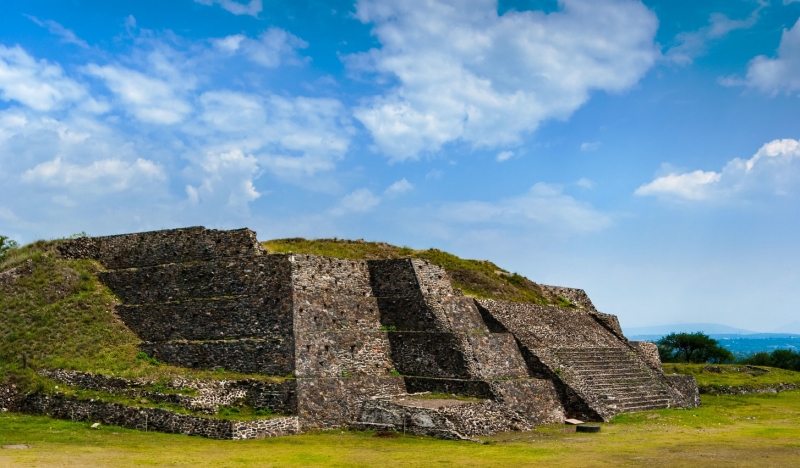
Cocoliztli, in the local Aztec language at the time, meant “the great pestilence”. It was a mysterious illness that led to the deaths of millions of people in what is now Mexico and Central America. For the people who suffered through the epidemic, the illness came at the worst possible time. At the time, the Aztecs were facing both natural and man-made devastation. An extreme drought had led to famine and the arrival of Spanish conquistadors further brought hardship and (more importantly) disease from a far away land.
The outbreak, characterised by symptoms ranging from high fever, abdominal pain, to jaundice and bleeding from the eyes and ears, most likely started in a valley of Central Mexico. It was considered a hemorrhagic fever, which is similar to the Ebola illness of 2016. At the time, no one could figure out what was causing the illness.
How we survived
Sadly, the conclusion of the Cocoliztli Epidemic is a tragic one. By the end of the outbreak, it had killed off between five and fifteen million people, effectively wiping out more than half of the Aztec population. With most of the infected dead and the survivors quickly moving away, the spread eventually slowed down before disappearing in 1548.
It wasn’t until 2018 that we finally found the potential source of the illness. By examining the skeletons of those who died from the illness, scientists found a subspecies of salmonella that is theorised to have been the most likely culprit. Unfortunately, the discovery came 700 years too late.
4. The HIV/AIDS Pandemic (1981 to present)
What is it?

As many of you know, HIV/AIDS is a sexually-transmitted disease that mainly spreads from unsafe sexual practises. Although the disease was officially recognised only in 1981, many experts believe that the first cases that led to the eventual pandemic started as early as 1920 in the Democratic Republic of Congo. The virus is thought to have originated from a virus that affected chimpanzees initially. However, the virus later found its way to humans, either via consumption of bush meat or via exposure of open wounds.
Initially, the disease became a form of stigmatisation, as people who first heard about the disease ignorantly believed that it mainly affected only certain groups of people. However, as the disease began to spread more rapidly across the world (30 million deaths by 2009), medical professionals raced to find a cure.
How we survived

Through the advocacy of safe sex, the pandemic was largely brought under control in developed countries within a few years. However, in certain regions of Africa, the disease continues to be widespread. Initially, there was no cure for the virus but there were antiviral drugs to reduce viral load and limit the contagiousness of those with the virus.
However, recent medical breakthroughs may open the way for a cure for the virus. In March 2020, a man from the UK officially became the second man to be cured of the HIV virus after 30 months of blood tests returned negative. The first patient to be cured was a man in Berlin in 2007. In both cases, the cure presented itself in the form of stem cells that came from a donor with a relatively rare genetic mutation that confers resistance to HIV.
5. The Spanish Flu (1918 – 1920)
What is it?
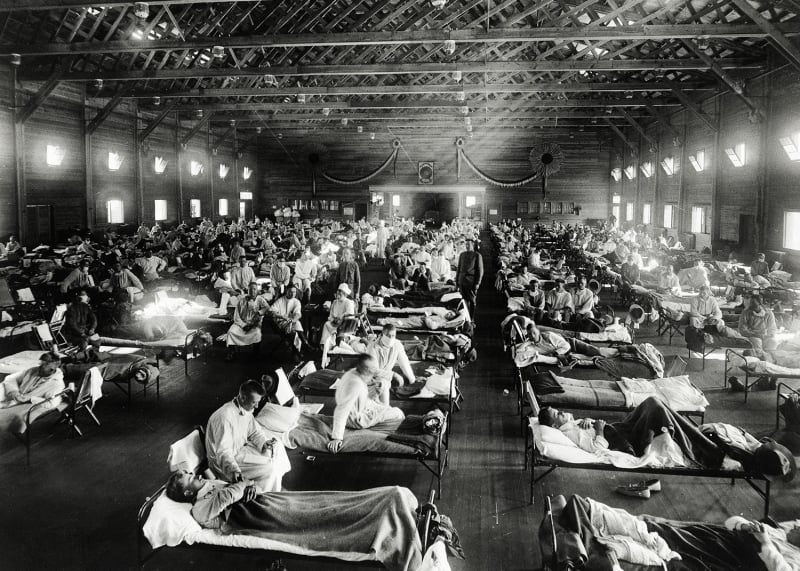
Like the Asian Flu Pandemic, the influenza outbreak of 1918 saw victims suffer from flu-like symptoms such as chills, fever and fatigue. Initially, those who were infected seemed to recover within a few days, and mortality rate was low. However, a second wave of infections hit Europe later in the year. This new, highly contagious strain of the virus eventually spread across the world.
This time, victims died fairly quickly, sometimes within hours of developing symptoms. Reportedly, their skin turned blue (lack of oxygen) and their lungs filled with fluid. This was due to a group of genes that progressively weakened the victims’ respiratory system, allowing bacterial pneumonia to develop rapidly.
However what made this particular wave so frightening was that it often targeted healthy adults while the old and young remained relatively unscathed. By the end of the pandemic, it had recorded half a billion infections (more than ⅓ of the global population), and between 50 – 100 million people had died.
How we survived
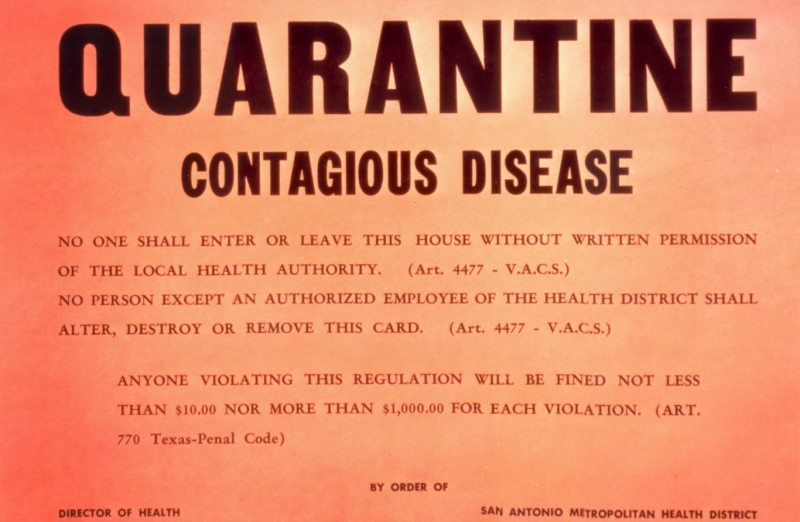
When the pandemic started getting out of hand, governments across the world took immediate action. Governments ordered citizens to wear masks. They also shut down schools, entertainment outlets, and businesses and enforced strict social distancing measures.
Basically, everything that we are doing now to combat COVID-19 is a blueprint from the 1918 Spanish Flu! And thanks to the harsh measures, the pandemic finally ended in 1920, after most of the infected had perished and the survivors developed immunity.
6. The Black Death (1346 – 1353)
What is it?

The Black Death is the most devastating pandemic that has ever befallen the human race. It was a bubonic plague that effectively halved the entire population of Europe. The plague got so bad that some even considered it a near-extinction level event. It started in the Middle Ages as a highly infectious disease in Asia.
In 1347, it made its way to Europe and went on to ravage the continent until 1353. Experts believe the disease travelled from Asia to Europe via the various trade routes at the time. It was caused by a strain of bacteria found in sick rodents and often transferred to humans via fleas. It then started to transmit from human to human after the first humans fell victim to the virus.
Those who suffered from the plague would often develop flu-like symptoms within a week. However, the bubonic plague’s most significant characteristic is the formation of one or more “buboes”. These are infected, enlarged, and often excruciatingly painful lymph nodes. They form as a result of the bacteria reproducing in certain areas of the body. Left untreated, patients often developed severe gangrene (tissue death) which would turn the affected area black (hence the name).
The Black Death recorded an astonishingly high fatality rate in Europe, claiming up to 200 million lives.The damage to the population was so severe that it would take 200 years for the continent to fully replenish the numbers. So many people died that those who survived actually enjoyed a period of better pay and higher standards of living because labour was in such shortage! Even though the pandemic ended, the plague still exists, even to this day.
How we survived

The good news is that nowadays, we can treat the bubonic plague with antibiotics, as seen in an episode of the medical drama, House M.D. (season 2, episode 18). However, back then, the only way to control the plague was largely through the invention of strict quarantine measures.
Port officials in the Venetian city of Ragusa started to isolate newly-arrived sailors on their ship until they were sure that they were free of the infection. Soon, other European cities followed suit. The authorities locked down cities and ordered people not to leave their homes unless absolutely necessary. They isolated the infected from other people and eventually, the plague stopped spreading nearly four years after it arrived.
Did you know? Sailors that were isolated in Ragusa were confined to their ship for forty days. In Italian, forty is quaranta, and the period of 40 days was known as a quarantino. And that is how we got the English word quarantine.
7. H1N1 Swine Flu Pandemic (2009-2010)
What is it?

Before COVID-19 became a pandemic, we’ve had a few scares in the last two decades as well. Severe Acute Respiratory Syndrome (SARS) was the first pandemic of the 21st century, and Middle Eastern Respiratory Syndrome came next. The media often highlights these because they were also coronavirus outbreaks. However, one pandemic that seems almost forgotten is the H1N1 pandemic of 2009.
In January 2009, a new strain of the H1N1 influenza started spreading in Mexico. Researchers found that the gene of the virus was also found in domestic pig herds (leading to the coining of the name swine flu). However, despite the name, the virus did not spread via the consumption of pork. Instead, like the Asian Flu Pandemic, it was most likely due to a mutation of the virus after it binded to human influenza viruses.
Once the first human cases of the H1N1 flu surfaced, the infection began to spread and eventually reached multiple countries across the world. Patients would display typical flu symptoms before developing pneumonia. Within a year, the virus had infected an estimated 1.4 billion people, resulting in the deaths of between 150 to 500 thousand people, with most fatalities occurring in those younger than 65.
How we survived
Thankfully, due to the prevalence of influenza-linked diseases, a vaccine for the H1N1 virus was quickly produced and distributed globally. Today, the vaccine is often included in the list of recommended annual flu vaccines in many countries.
8. The Ebola Crisis(2014 – 2016)
What is it?
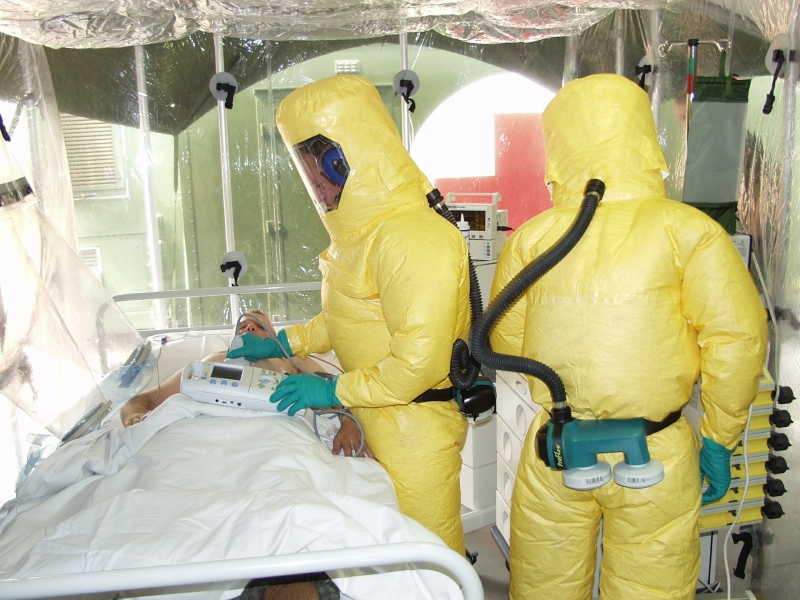
Compared to every other entry on this list, the West African Ebola epidemic doesn’t seem to be a very devastating disease due to the low infection rate and the number of deaths. However, I decided to highlight it because it best represents what a pandemic in an age of social media and misinformation looks like.
Ebola emerged and came to prominence in West Africa in late 2013, spreading rampantly in countries like Liberia and Sierra Leone, before spreading to the rest of the continent and eventually reaching Europe. However, since most of the cases were in Africa, the WHO classified it as an epidemic rather than a pandemic.
Typical signs of the disease include fever, severe headaches, fatigue, and unexplainable bleeding among other general symptoms of illness. Despite infecting less than 30,000 people, the death toll for Ebola was more than 10,000, which meant that 1 in 3 patients died. However, the reality is that, like COVID-19, the only treatment options for Ebola is the management of symptoms as the body fights off the virus.
Unfortunately, what followed was a media frenzy highlighting how dangerously fatal Ebola was. It led to an increase in racial discrimination against people from the region. It also led to a certain degree of unnecessary panic as the world braced itself for a pandemic that never came.
Also read: Here’s Why COVID-19 Numbers Aren’t As Important As You Think They Are
How we survived

Because they detected the virus at an early stage in only a specific geographical area, worldwide response mainly focused on preventing global infection.
Travellers leaving countries with Ebola had to undergo vigilant screening processes. This helped authorities isolate the sick and prevent them from going overseas. Most countries also employed contact tracing to track down any potential asymptomatic carriers. Through these stringent measures, cases began to decline. Finally in 2016, the WHO lifted the alert on the West Africa Ebola Outbreak.
We will survive this!
And there you have it, eight of the deadliest pandemics and health crises in human history. As you can see, the human race has been through and survived plenty of global medical emergencies. So, don’t let COVID-19 bring you down. We’ve survived before, and we certainly will survive again! Stay home, and stay safe everyone!






